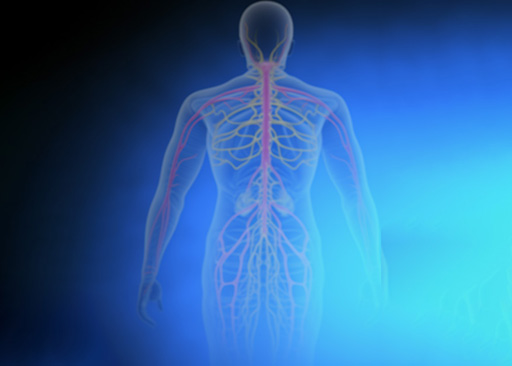UTI Symptoms [Painful Causes, and Management Strategies]

What Is Urinary Tract Infections (UTI)?
The body has a urinary system comprising two distinct parts, the lower and upper urinary tracts. The upper part consists of the kidneys and ureters, while the lower division houses the bladder and urethra. Each element has unique functions but can get influenced by physical activity, dietary habits, medication, and the ratio of waste products to the water. This part’s primary function is the filtration of excess water, salts, and waste from the blood.
All these items then get redirected to a temporary reservoir. In the long run, they all intermittently get expelled from the body. Since these structures appear in both the female and male anatomy, both sexes can suffer from urinary tract infections. However, the chance is two times higher in women than men. Some even have repeat infections in their lifetime. One out of ten men will suffer from these predicaments.
Causes
The growth of UTI begins when harmful microscopic organisms enter the urinary tract. Some of these include fungus skin infections, but bacteria is the predominant cause. Upon testing, you will notice that a considerable number of urinary tract infections have different types. Typical examples include Proteus mirabilis and Escherichia coli.
Fortunately, the body tries to eliminate these before they can bring about any symptoms. The infection can affect any element of the urinary tract.
Pregnancy
Pregnancy is a beautiful journey for every woman. However, it is not always a walk in the park. It is at this moment that the woman’s body is most vulnerable and prone to infections. The urinary tract goes through changes during the 6th and 24th week. Currently, the uterus goes through expansion to accommodate the growing fetus. While it is performing this function, it interferes with the drainage of the urine from the bladder. The situation may result in UTI.
Gender
The distinct anatomical features in the male and female bodies put women at a greater risk of getting UTIs than men. Women have a shorter urethra as compared to men. The smaller distance allows for bacteria’s movement within a brief period, thus resulting in the bladder infection. Transferring from this to the urethra, especially when urinating, is a one-time process.
Menopause
Many assume they can relax and not worry, but it comes with a lot of baggage. UTIs are one of the problems that menopausal women may undergo. The hormonal changes interfere with the beautiful bacteria. The body harbors bacteria but only the beneficial ones. These cannot bring about infections but rather defend against the harmful microbes within the urinary tract.
Hygiene
Technology has led to the invention of products to enhance personal hygiene. Although the sellers might speak highly of them, they will not tell you of the side effects. Some of these are the major causes of urinary tract infections. Women who douche or use other sprays and powders are culprits for these infections. Additionally, holding urine for an extended time also propels the rate of getting infected.
Birth Control
Birth control is one way to prevent unwanted pregnancies. There are many methods to achieve this goal, but the principal culprits are diaphragms and spermicides. The two interfere with the good bacteria, thus making them inefficient.
Sex
Sex is one of the highest risk factors that bring about urinary tract infection. It is a conducive ground for the transportation of bacteria from the anus into the urethra. There is a higher risk for women than for men.
Health Conditions
Certain issues consequently lead to the growth of urinary tract infections. Such chronic medical conditions cause interference on the bodies’ immune system, thus weakening it. Some of these include Alzheimer’s, diabetes, kidney infection, kidney stones, bowel incontinence, and patients who have previously used a urinary catheter.
UTI Symptoms
When bacteria enter the urinary tract, your body will try as much to fend it off. If it cannot manage to get rid of it, the symptoms will start developing. There are different ways in which UTI can present themselves. The following are common UTI symptoms.
Burning Sensation During Urination
Urination is supposed to be effortless. However, with the presence of UTI, it becomes unbearable. People suffering from UTI get a burning sensation. It is very uncomfortable. The situation is medically known as dysuria. Urinary tract infections interfere with the bladder liner.
It becomes red and irritated and quite sensitive. When urinating, the acidic burns its lining, resulting in discomfort. Additionally, one may occasionally sense an itchy sensation when the urine passes. The situation is adverse at the onset and at the end.
Propelled Urination
An increased intake of water can lead to an intended urge to visit the toilet. Yet, if this is not the case and you suddenly have the need to urinate regularly, know that UTI is already knocking on your door.
UTI comes with byproducts that cause the inflammation of the urethra and bladder liner. The irritation is what propels the need to empty the bladder often. Bladder infection can cause it to always feel bloated, but a visit to the restroom reveals the contrary. The amount of urine excreted can be less than expected.
Traces of Blood in Urine
Hematuria, or blood in urine, is one of the common. The situations come about because the bacteria causing the infections act on the inner linings of the bladder. The result is ongoing inflammations that consequently result in red cells leaking into the urine. The situation does not hurt, but the patient should head to the hospital for a check-up if noticed.
Urgency to Urinate

Another common symptom of UTI in adults is an increase need to urinate. The bladder infection sends signals to the brain via the vagus nerve that it must get emptied. The need occurs at any given time, and one must react immediately. In such situations, the bladder can be overloaded or not. The pressure makes it difficult for the bladder to hold any urine.
Pelvic Pain
The pelvic is located just around the belly button. If you notice pain originating from around this, then get tested for urinary tract infection. The reason for this pain is the existing organs surrounding the area. Some of these include the womb, uterus, bladder, and ovaries.
Any infection that interferes with any of these would result in pain escalating to that larger region. The pain comes from pressure or an ache around the region. It is intense when the bladder is full. The principal cause of the pain is an inflammation of the bladders and tissues’ linings within the same location.
Cloudy Urine
Milky urine is another UTI symptom. The condition is called Pyuria. The onset of the infection triggers the release of white cells to fight it. A vast congregation of these results in the whitening of urine.
Nausea
Nausea always comes hand in hand with vomiting and can come because of underlying issues like UTI. When it reaches the kidneys, it becomes an infection called pyelonephritis. The situation becomes adverse and can be a threat. If left unaddressed, the presentation of nausea and vomiting can range from mild to severe, relative to the infection level.
Common Testing
The urinary tract is a comprehensive system. However, one common feature that is associated with this place is urine. A health care doctor will request a sample to undertake the following tests.
Urinalysis: The tests involve examining the urine for red blood and white blood cells.
Urine Culture: Although urinalysis will reveal bacteria’s presence in your urine, it is difficult for the doctors to ascertain the exact kind. A further uterine culture is essential to figure out the infection. The test is efficient as it helps in the arrival of the appropriate protocol.
With the two tests, you are likely to heal from the infections. However, some patients do not respond positively. In such a case, they may recommend further examinations to get to the bottom of the problem. Examples include ultrasound, CT Scan, and cystoscopy. Some may prescribe a different set of medications or antibiotics depending on the result.
Managing Symptoms
Antibiotics work efficiently by killing and fighting any ailments, thus functioning as expected to prevent UTIs. A doctor will prescribe a type that suits the kind of issue at hand explicitly. The symptoms might stop along the way, but you must proceed with the intake. Keep taking until you complete the medicine. Otherwise, you will develop resistance against the drug. It is common for people who suffer from frequent UTIs.
How to Prevent Urinary Tract Infection?

During menstruation, frequently change the pads and tampons to keep the area fresh and dry. Increase the intake of fluids, precisely water. At least six to eight glasses are sufficient to drive out any harmful bacteria from your system. Lastly, avoid tight-fitting clothes.
BioScan is a bioresonance tool used by practitioners that work with patients having these health symptoms. Please contact us for more details on how BioScan can be integrated into your practice.
